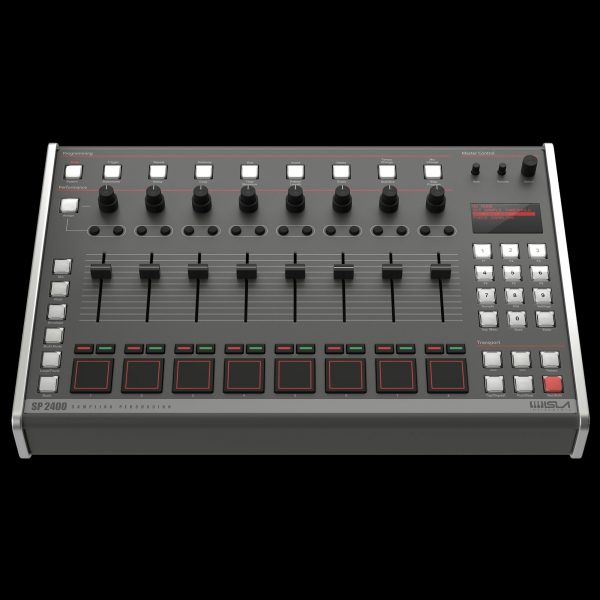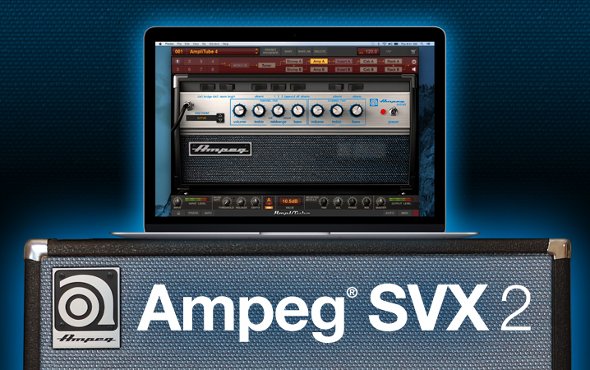
Analogue Solutions announces forthcoming fourth run of Colossus supersized synth that trips back to the future of analogue
KINGSWINFORD, UK: following a showstopping showcase during its introduction at SynthFest UK 2019 in Sheffield, British boutique electronic instruments innovator Analogue Solutions is proud to announce a forthcoming fourth run of Colossus — its supersized synth that trips back to the future of analogue, albeit symbolising so much more than a powerful analogue ‘workstation’ with no fewer than 12 VCOs (Voltage-Controlled Oscillators) beating at its monumental musical heart, rather representing art, architecture, and superlative studio furniture at its hand-built best by taking its design cues from the colossal classic that is the EMS Synthi 100, although no Synthi circuit was cloned or copied in making the destined-to-be-classic Colossus fit for a new generation of high-flying owners — as of February 15…
Despite design cues harking back to the dawn of analogue synthesisers with a knowing nod of appreciation to one of the largest and — at almost £100K in today’s money! — most expensive examples ever built anywhere, let alone by British trailblazing entity EMS, encompassing no fewer than 12 VCOs and eight VCFs (Voltage- Controlled Filters) and much more besides in the colossal classic that is the Seventies-vintage Synthi 100, with the 30 or so units produced in its decade-long lifespan mainly ending up in university research departments or national broadcaster’s in-house composition studios (such as The BBC Radiophonic Workshop) before becoming lost in the sands of time to almost all but serious synth collectors and restorers (including, ironically, Analogue Solutions founder Tom Carpenter himself), British boutique electronic instruments innovator Analogue Solutions’ suitably-named Colossus — courtesy of its imposing 1700mm (W), 700mm (D), and 650mm (H) dimensions, while weighing in at… too big to fit on the scales! — symbolises so much more than a powerful analogue ‘workstation’ with no fewer than 12 VCOs beating at its monumental musical heart, rather representing art, architecture, and superlative studio furniture at its hand-built best.
But better still, Synthi circuits were neither cloned nor copied in making Colossus fit for a new generation of high-flying owners while fortunately fitting through a standard-sized doorway — unlike a Synthi 100, of course; Colossus’ creator prefers to come up with designs of its own musical making. Moreover, Analogue Solutions has chosen to make use of original circuits tried and tested in favourites from its acclaimed analogue synthesiser products, past and present, including Polymath (https://www.analoguesolutions.com/polymath-paraphonic-modular-synth) — a self-contained four-VCO PARAPHONIC ANALOGUE SYNTHESISER with ANALOGUE SEQUENCER and SPRING REVERB; Telemark (https://www.analoguesolutions.com/telemark-patchable-rack-synth) — a semi-modular analogue monosynth, much loved by bona fide synth pop pioneer Philip Oakey of Sheffield-based The Human League, a colossus connoisseur of synthesisers in his own right, thanks to owning one of the largest collections in the UK; and, more recently, Vostok2020 (https://www.analoguesolutions.com/vostok2020) — the latest (fourth) incarnation of Tom Carpenter’s semi-modular masterpiece taking some of the best parts of its iconic Vostok V2 and V3 Deluxe predecessors and bringing them together as an augmented ANALOGUE POWER SYNTH fit for a new decade. All are united by their ALL ANALOGUE VOICE & MODULATION CIRCUITS — as boldly blazoned across the former’s front panel. Analogue as in really analogue. After all, as implied by its apt appellation, Analogue Solutions truly trades on real transistors and op-amps — no CPU (Central Processing Unit) stabilised and quantised circuits, no DCOs (Digitally-Controlled Oscillators), and no digital EGs (Envelope Generators), as are often found on other so-called analogue synthesisers. Since such circuitry is based on designs dating back to the Seventies, all Analogue Solutions synthesisers proudly possess a truly vintage sound — as does, of course, Colossus, albeit taking things to a whole new level, literally so as an analogue heavyweight to be reckoned with.
With 12 VCOs and eight VCFs to its own notable name, Colossus musically matches the aforesaid extensive and expensive Synthi 100, yet comes complete with a whole lot more besides. Indeed, its oscillator panel is well specified in its own right. There, the FREQ (frequency) — pitch — range of OSCILLATOR 1 through toOSCILLATOR 12 is extremely wide, and each can also be used as an LFO (Low Frequency Oscillator); each features four waveforms, plus pulse width, oscillator sync, and sub oscillator abilities. All are complimented by a SAMPLE AND HOLD generator, RANDOM VOLTAGE GENERATOR, and two pink/white noise generators — namely, NOISE GENERATOR 1 and NOISE GENERATOR 2.
The equally well-specified filter panel features four multi-mode (hi-, band-, and low-pass) 12dB filters — FILTER 1 through to FILTER 4, the circuit for which was originally based on the filter found in the classic dual-oscillator Oberheim SEM (Synthesizer Expander Module®) created by legendary American synth designer Tom Oberheim back in 1974, albeit Analogue Solutions skilfully applied some heavy-duty modifications of its own. On top of that, there are also four low-pass 24dB transistor ladder filters — FILTER 5 through to FILTER 8 — featuring a ‘Moog’ style sound. Saying that, all eight VCFs have serial VCAs (Voltage-Controlled Amplifiers), so there are actually eight VCF/VCA combinations in total! That’s not all as this panel also houses two mechanical spring reverbs — REVERBERATIONS 1 and REVERBERATIONS 2, each featuring a triple spring tank; two RING MODULATORS; two voltage SLEW LIMITERS; and four envelopes — ENVELOPE SHAPER 1 through to ENVELOPE SHAPER 4 — with ATTACK, DECAY, SUSTAIN, and RELEASE controls, alongside hold repeat and gated repeat trig (trigger) MODE functions.
Furthermore, the so-called ‘scope’ panel — so named as it includes an oscilloscope — pushes things to an even higher level, specification-wise, since it includes four VCAs — VCA 1 through to VCA 4 — in addition to those found in the filter panel, plus two LFOs — LFO 1 and LFO 2 — in addition to those found in the oscillator panel, as well as four A S D/R envelopes — ENVELOPE SHAPER 1 through to ENVELOPE SHAPER 4. So since the aforesaid VCOs can be used as LFOs, Colossus can, in fact, be potentially pressed into playing a total of 14 LFOs! Likewise, since each of the eight VCFs have VCAs hardwired inline, these plus the individual VCAs means that there is actually a total of 12 VCAs available to any adventurous user!
Ultimately, Colossus comes complete with yet more populated panels for setting the controls for the heart of the synth, as it were, with a ‘digital intervention’ of sorts showing through the touch panel housing two touch keyboards with digital note sequencers — TOUCH KEYBOARD CONTROL / SEQUENCERS, although analogue control readily resumes with the two JOYSTICK CONTROLLERS above and six-channel STEREO AUDIO MIXER above them. The sequencer panel is dominated by a SERIAL 1-64 SPLIT 2x 1-32 step SEQUENCER with CLOCK generator, GLIDE, JUMP, RESET, CV OUT, GATE OUT, and other control features. Four large 10V backlit SIGNAL METERS — CHANNEL 1 through to CHANNEL 4 — up the analogue ante alongside the SEQUENCER. Then there are two broadcast-quality CV and audio pin matrix panels — inspired in no small part by the British-built EMS VCS3, which made musical history upon its introduction in 1969 by being the first commercially portable synthesiser available anywhere in the world, thanks to its innovative modular matrix-based patchboard dispensing with the telephone exchange-like cabling of other (much larger) modular systems in favour of making space-saving connections with (removable) pins — and last, but by no means least, there are also four minijack patch panels providing I/O from all Colossus’ circuits.
Clearly an obvious question was raised at the outset: why? “Well, because I can,” countered Tom Carpenter at SynthFest UK 2019, before later adding: “I’ve sold way more than I expected.” On the strength of that, then, clearly Colossus has gone from strength to strength, as evidenced by Analogue Solutions’ spirited announcement of a forthcoming fourth run. Regretting missing out on previous builds becomes a thing of the past, obviously, though those collectively breathing a sigh of relief are advised to add themselves to the Colossus waiting list (here: https://www.colossus-synth.com/contact). And Analogue Solutions is already working on some upgrade options, which will be announced later this year and available to buy as add-ons — proof positive that this colossal synthesiser success story has clearly far from run its course!
The fourth Colossus run is in production and available to order for purchase — priced at £25,000.00 GBP (excluding tax and delivery) directly from Analogue Solutions here: https://www.colossus-synth.com/buy — with shipment direct to the customer’s door, while wait time is around two to four weeks after Analogue Solutions’ receipt of a £6,500.00 GBP deposit (excluding tax and delivery), payable here: https://www.analoguesolutions.com/colossus-1 — with balance and shipping costs required shortly before despatch. (Please note that if shipping is required then the crate and packing is estimatedat £300.00 GBP, while shipping will range from around £300.00 GBP for Western Europe to around £1,500.00 GBP for the USA.)
For more in-depth information, please visit the dedicated Colossus webpage here: https://www.colossus-synth.com/colossus
Watch Analogue Solutions’ aspirational and awe-inspiring trailer video for Colossus here: https://youtu.be/yp4Y3s9KJiY
See and hear Colossus in action while watching Analogue Solutions’ suggested video playlist from here:https://www.youtube.com/watch?list=PLq-KgzIcyyGFGY42EzrTWHsm2OO-8zIL9&v=Doa_O_FiZEY&feature=emb_logo

























